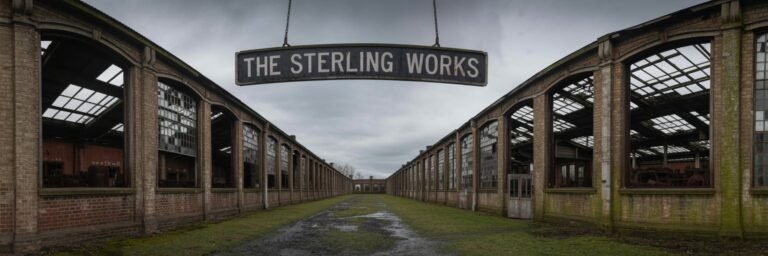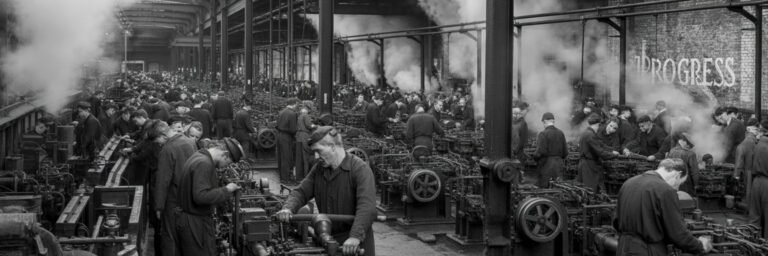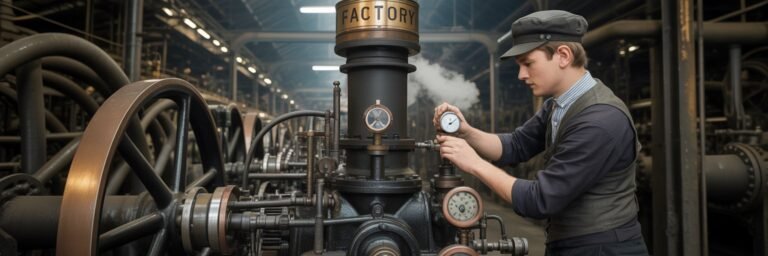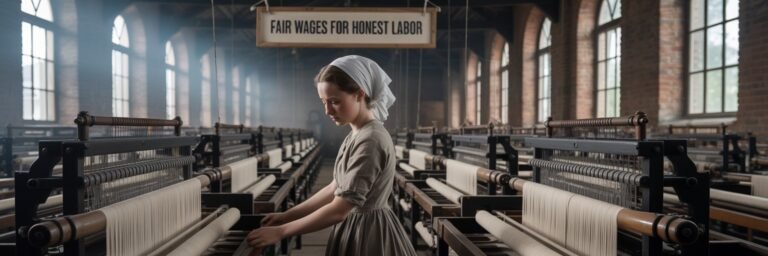INTRODUCTION
In the annals of history, the Industrial Revolution stands as a behemoth — a period of profound social, economic, and cultural upheaval. But hidden beneath the rust of factories and the cacophony of burgeoning railroads, a subtler machinery powered this period: the machinery of propaganda and power, a psychological tool as potent as steam or steel. This article aims to explore this intricate interplay, examining how those in power wielded the influence of propaganda during the Industrial Revolution to reshape societies and construct our modern industrial world as we know it.
HISTORICAL BACKGROUND
The Industrial Revolution, roughly spanning from 1760 to 1840, dramatically transformed Britain before spreading to Europe and the rest of the world. It typified the transition from agrarian economies to those dominated by industry and machine manufacturing. Graced with the advent of steam-powered machinery, improved transportation methods like the railroad and steamship, and the application of scientific strategies to production, humans entered an age of unprecedented productivity and capitalist wealth.
Simultaneously, the power structures that had characterized the previous agrarian societies also underwent drastic changes. Aristocratic landowners found their influence waning, while the wealth of a rising merchant class, industrialists, and financiers expanded enormously. This redistribution of power significantly shifted the balance and dynamics of societal influence.
THEORIES AND INTERPRETATIONS
As historians have investigated this historical cornerstone, a range of theories have emerged regarding the use of propaganda during the Industrial Revolution. Some historians argue for a ‘Manufactured Consent’ model, as theorized by Noam Chomsky and Edward S. Herman. This model suggests that elites and those in power during this period orchestrated systematic propaganda campaigns to control public opinion, normalize industrial impacts, and consolidate control.
On the other end of the spectrum, the ‘Cultural Hegemony’ theory put forth by Antonio Gramsci asserts that the ruling class didn’t just impose their worldview, but it became the accepted cultural norm. This embedded industrial capitalism not just an economic necessity, but a societal inevitability in the minds of the populace. The factories and belching smokestacks were not seen as pernicious but were symbols of progress and prosperity.
MYSTERIES AND CONTROVERSIES
The use of propaganda during the Industrial Revolution does not come without its controversies. Despite the largely documented influence of the capitalist class, to what extent a standardized and systematic spread of propaganda existed remains a contentious point among historians.
Moreover, the actual depth and effectiveness of Industrial Revolution-era propaganda campaigns are also subjects of heated debate. Could the ruling class truly manipulate a largely illiterate population through the use of widespread print propaganda? Did the early industrial capitalist have a sophisticated enough understanding of psychological manipulation to execute such grand subliminal exertions?
SYMBOLISM AND CULTURAL SIGNIFICANCE
The Industrial Revolution was brimming with powerful symbols exploited by those in power. The ‘Factory,’ characterized by plumes of smoke reaching towards the sky, embodied might, progress, and wealth. Advertisements, newspapers, and even the new penny dreadful novels propagated these symbols as beacons of progress and prosperity.
Moreover, the advent of new jobs in the factories was presented as an opportunity, a sign of increasing social mobility. The new middle class, born out of industrial labor and entrepreneurship, became a symbol itself – a proof of progress offered by the new capitalist society.
MODERN INVESTIGATIONS
Modern investigations into this topic involve meticulous study of period-print sources, art, lyrics, and firsthand accounts. Robert Darnton’s work on the role of rumors and slander in pre-Revolutionary France provides a methodology replicable to Industrial Revolution-era England, emphasizing the exploration of “anecdotal currency” and its symbolic interpretations.
Moreover, application of modern-day cognitive and social psychology allows for a deeper understanding of how propaganda could have psychologically influenced the public during this period. Current scholars employ such interdisciplinary approaches, unearthing patterns and nuances not seen before, further enriching our understanding of this complex historical narrative.
LEGACY AND CONCLUSION
The legacy of this dynamic interplay of propaganda and power during the Industrial Revolution is entrenched in our modern world system. The echoes of these machinations reverberate in our contemporary societies, political systems, economies, and our own perceptions of progress and prosperity.
It becomes apparent when examining this period that the power of propaganda in shaping societal norms and perspectives is immeasurable. It was the invisible hand that guided the gears of the Industrial Revolution, expertly maneuvered by those in power to construct a new world order. This article, in rendering a glimpse into this shadow-play of influence and acquiescence, underscores the significance of understanding history in its full complexity—beyond the hum of machinery and the clamor of social upheaval, into the realm of power, perceptions, and propaganda.






